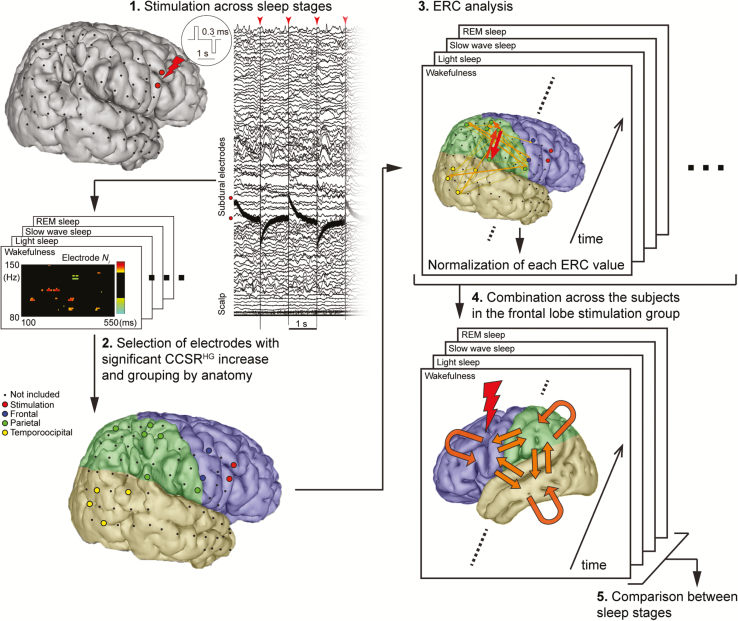Figure 1.
The schema of analysis. (1) Single-pulse electrical stimulation (SPES) at a fixed frequency of 1 Hz with alternating polarity was applied to frontal or parietal cortex (this representative figure shows one of the frontal stimulation group) via two neighboring subdural electrodes across sleep stages (wakefulness, light sleep, slow-wave sleep, and REM sleep.). (2) High-gamma cortico-cortical spectral responses (CCSRHG) were defined as statistically significant increases in high-gamma (80–150 Hz) power within 100–550 ms of stimulation, relative to baseline (−300 to −100 ms before stimulation). Any ECoG site with a CCSRHG during wakefulness or any sleep stage was considered to be part of network dynamics elicited by SPES. These ECoG sites were grouped by anatomy into frontal, parietal, and temporo-occipital lobe for further analysis. (3) Patterns of high-gamma propagation within the network were analyzed by the event-related causality (ERC) method in each sleep stage. ERC values were normalized for group analysis. (4) The data were pooled across subjects in each stimulation group (frontal or parietal) in each sleep stage. (5) We investigated whether ERC values between sleep stages change in each propagation pattern.

